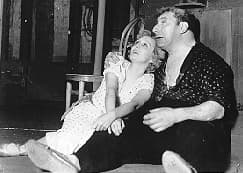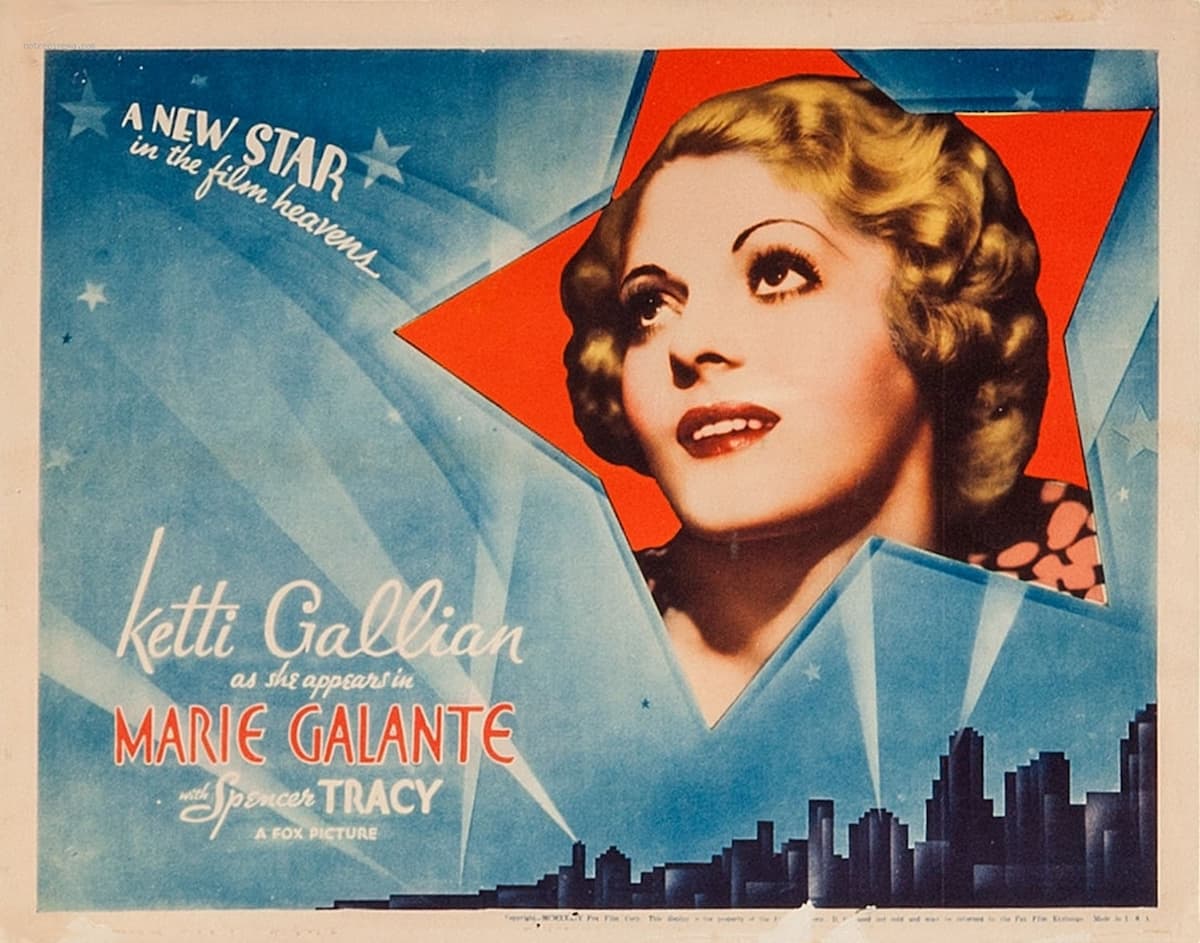Starting with a hoot of a boat whistle, we’re off on an adventure. For our heroine, the boat trip is one with destination disaster but for us, we get a treat in Kurt Weill’s music for the musical Marie Galante.

Kurt Weill
Jacques Deval’s 1931 book Marie Galante, is about the life and death of our eponymous heroine, who has been kidnapped by a sea captain on his way to Venezuela. He drops Marie off in Panama when she won’t give in to his desires. Forced to make her money on the street to return home, just as she’s about to leave, she’s murdered by a spy ring.

Florelle as Marie and Alcover as Staub from the original production, 1934 (Kurt Weill Foundation)
The book was made into a musical in 1934, with music by Kurt Weill, and was given its premiere on 22 December 1934 at the Théâtre de Paris. That same year, it was also made into a film starring Spencer Tracy, with Ketti Gallian as Marie. The music for the film was done by Arthur Lange and the storyline was cleaned up considerably. Marie now is a stage performer and is rescued at the end by her friends. The author, Deval, was so appalled by the changes to his story that he insisted with Fox Film Corporation that his name must not be used in conjunction with the film.

Marie Galante: Ketti Gallian. 1934
A four-movement suite of music from the play has been created, receiving its premiere in 1990. The Suite Panaméenne (Panamanian Suite) starts with the Introduction (those boat whistles!) and a tango. The Weill Foundation notes that the Tango was reconstructed by H.K. Gruber.
Kurt Weill: Suite panaméenne (Panamanian Suite) – I. Introduction and Tango (Basel Sinfonietta; Mark Fitz-Gerald, cond.)
What’s unusual for an orchestral suite is the inclusion of accordion, guitar, banjo, and soprano, alto, and tenor sax. The small orchestra (16 players) brings us back to the music and the sound Weill created for so many other stage works.
The second movement is a march of the Panamanian Army that has more than a bit of humour in it. It marches but also seems to be high-kicking at the same time.
Kurt Weill: Suite panaméenne (Panamanian Suite) – II. Marche de l’armée panaméenne (Basel Sinfonietta; Mark Fitz-Gerald, cond.)
The third movement combines a ‘youkali’ with a ‘tango habanera’.
Kurt Weill: Suite panaméenne (Panamanian Suite) – III. Youkali. Tango Habanera (Basel Sinfonietta; Mark Fitz-Gerald, cond.)
Youkali, which is an instrumental interlude in Marie Galante, was given words by Roger Fernay (nom de plume of Roger Bertrand), and published as the song ‘Youkali’, about an idyllic island at the end of the world that proves to be only a dream.
Kurt Weill: Youkali (Brigitte Fassbaender, mezzo-soprano; Cord Garben, cond.)
The final movement of the Suite Panaméenne brings us back to a classic Weill sound in the Tempo di Foxtrot.
Kurt Weill: Suite panaméenne (Panamanian Suite) – IV. Tempo di Foxtrot (Basel Sinfonietta; Mark Fitz-Gerald, cond.)
The Kurt Weill Foundation indicates that the work Marie Galante by Weill has been withdrawn from performance, but this suite and a newly assembled Chansons de quais (Songs of the Waterfront), created in 2017, preserve the music outside the production they were written for. Weill’s use of the popular dance forms of the day gives us a lively suite.
For more of the best in classical music, sign up for our E-Newsletter



